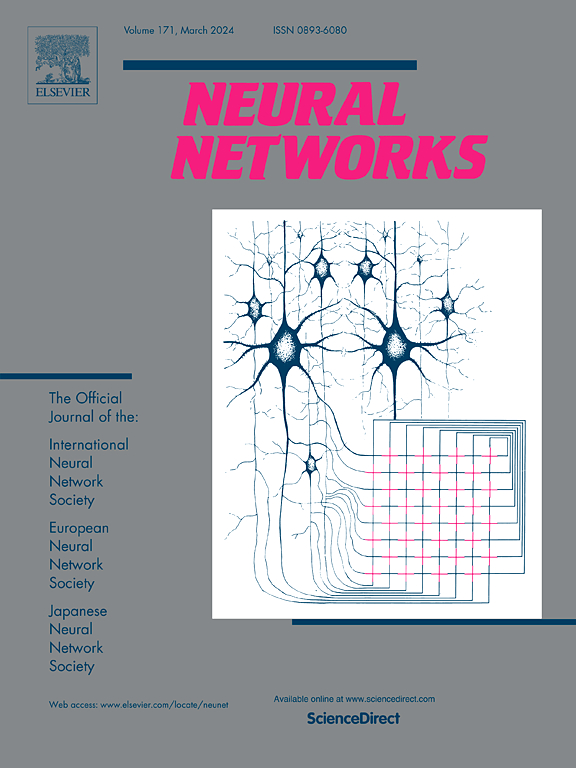Beyond homophily in spatial–temporal traffic flow forecasting
IF 6
1区 计算机科学
Q1 COMPUTER SCIENCE, ARTIFICIAL INTELLIGENCE
引用次数: 0
Abstract
Traffic flow forecasting is a crucial yet complex task due to the intricate spatial–temporal correlations arising from road interactions. Recent methods model these interactions using message-passing Graph Convolution Networks (GCNs), which work for homophily graphs where connected nodes primarily exhibit close observations. However, relying solely on homophily graphs presents inherent limitations in traffic modeling, as road interactions can yield not only close but also distant observations over time, revealing diverse and dynamic node-wise correlations. We designate this phenomenon as homophily–heterophily dynamics, which has been largely overlooked in previous works. To address this gap, we propose a homophily–heterophily Spatial–Temporal Graph Convolution Network (H2STGCN) that exploits both homophily and heterophily components in the spatial–temporal domain. Specifically, we first adopt time-related node attributes to disentangle the diverse and dynamic node-wise relations across time, thereby obtaining homophily and heterophily Spatial–Temporal Graphs (STGs), which provide comprehensive insights into road interactions. Subsequently, we construct dual information propagation branches, each outfitted with a specific type of STG, to exploit multiple ranges of spatial–temporal correlations from distinct perspectives through dilated causal spatial–temporal graph convolution operations on STGs. Additionally, we introduce a Graph Collaborative Learning Module (GCLM) to capture the complementary information of these two branches via mutual information transfer. Experimental evaluation on four real-world traffic datasets reveals that our model outperforms state-of-the-art methods.
时空交通流预测中的超越同质性。
由于道路相互作用所产生的复杂时空相关性,交通流预测是一项重要而复杂的任务。最近的方法使用消息传递图卷积网络(GCNs)对这些相互作用进行建模,GCNs适用于同态图,其中连接的节点主要表现为密切观察。然而,仅仅依靠同态图在交通建模中存在固有的局限性,因为道路的相互作用不仅可以产生近距离的观察,也可以随着时间的推移产生远距离的观察,从而揭示出多样化和动态的节点智能相关性。我们将这种现象称为同异性动力学,这在以前的作品中很大程度上被忽视了。为了解决这一差距,我们提出了一个同质-异质性时空图卷积网络(H2STGCN),该网络利用了时空域中的同质和异质性成分。具体而言,我们首先采用与时间相关的节点属性来解开不同时间和动态节点之间的关系,从而获得同质和异质时空图(stg),从而全面了解道路相互作用。随后,我们构建了对偶信息传播分支,每个分支都配备了一种特定类型的STG,通过对STG的扩展因果时空图卷积操作,从不同的角度挖掘多个时空相关性范围。此外,我们引入了一个图形协同学习模块(GCLM),通过相互信息传递来捕获这两个分支的互补信息。对四个真实世界交通数据集的实验评估表明,我们的模型优于最先进的方法。
本文章由计算机程序翻译,如有差异,请以英文原文为准。
求助全文
约1分钟内获得全文
求助全文
来源期刊

Neural Networks
工程技术-计算机:人工智能
CiteScore
13.90
自引率
7.70%
发文量
425
审稿时长
67 days
期刊介绍:
Neural Networks is a platform that aims to foster an international community of scholars and practitioners interested in neural networks, deep learning, and other approaches to artificial intelligence and machine learning. Our journal invites submissions covering various aspects of neural networks research, from computational neuroscience and cognitive modeling to mathematical analyses and engineering applications. By providing a forum for interdisciplinary discussions between biology and technology, we aim to encourage the development of biologically-inspired artificial intelligence.
 求助内容:
求助内容: 应助结果提醒方式:
应助结果提醒方式:


